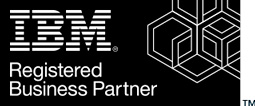Para ver un resumen de nuestra web en español, haz click aquí.
We work in different sectors, from sports, media, logistics and industry, to health, entertainment, retail, transport and security. If you need a specific solution, do not hesitate to let us know.
Case Studies
Technologies
Click on menu below to browse through our technologies and their applications.
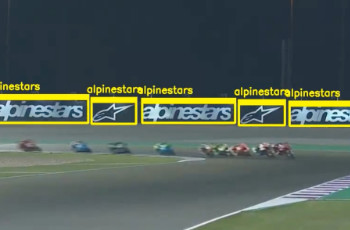
Object Recognition
It concerns two main tasks: Object detection, locating objects in an image and indicating their location with a bounding box; Object classification, predicting the type or class of an object in an image. For example, detection of banners in sports events and the classification of each banner to different brands.
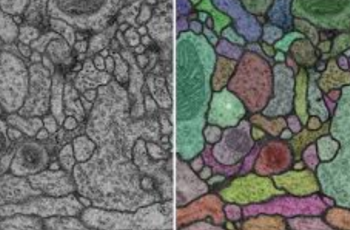
Object Segmentation
It provides information about various regions of interest in an image. It classifies each pixel of the image into one of the multiple classes. Semantic segmentation has no information regarding individual objects whereas instance segmentation gives a unique ID to each object. For example, detect irregular scratches in mechanical pieces and measure its surface.
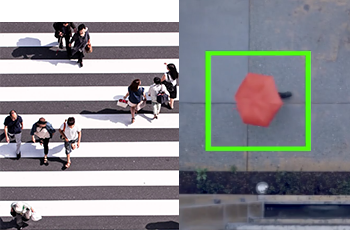
Object Tracking
Aims to analyze videos to identify and track multiple objects, giving them a unique ID and a bounding box to each object for each frame of the video. For example, following porcine sperm cells and analyzing its motility and trajectory.
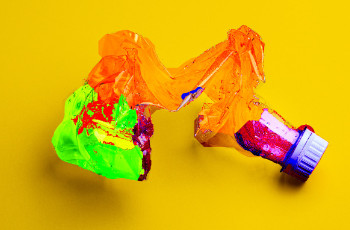
Hyperspectral
Non-visible light can provide information about the molecular composition of any object and material. This can be implemented in various processes related to quality control and industrial decision making such as food and recycling industry-related processes.
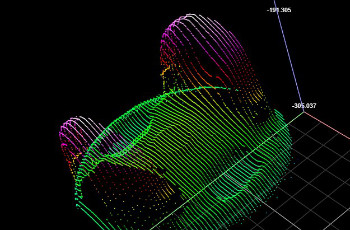
3D Vision
With technologies such as infrared and visible stereoscopic cameras, or laser profiling sensors, we can understand the 3D information of the world surrounding us. This allows us to create multiple applications regarding objects measurements, people counting and tracking, or navigation through space.
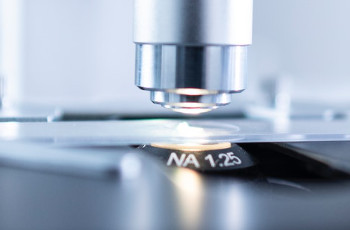
Microscopic Vision
With specific AI algorithms to visually process and understand microscopic images. We can identify objects of interest, segment them and track them across time to help users with their tasks such as quality control or diagnosis.

Historical Records
The analysis of time series helps to understand the evolution of the data, detect anomalies or predict data trends. Clustering allows us to group individuals by their similarities.

Data-Driven Decisions
Analyze, visualize and understand your data to make real-time decisions. With our dashboards displaying already trained models data, it is possible to see huge amounts of data in a glance.

Predictive Models
Record all data through time, allow us to predict what’s going to happen in the future, and anticipate issues or events, whether good or bad, to resolve them before they happen.
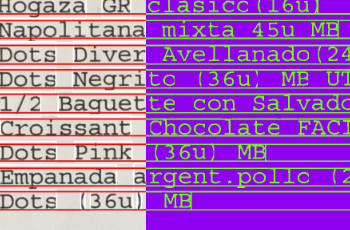
Text Recognition
Detects and recognizes characters and words. It can be used in handwritten text or printed text in a document. The input might be a scanned document, a photo of a document, a scene photo, or from subtitle text superimposed on an image, like a scoreboard in a match. It can be used for multiple purposes such as claims, tables, delivery notes, bills, traffic signals, and any other kind of text.
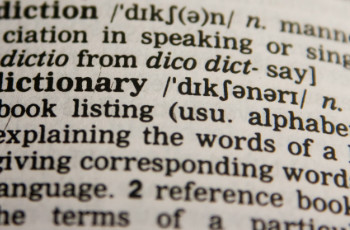
Natural & Structured Language Processing
NLP describes the ability of a machine to understand human language, break it down, and understand what it means. It can help to analyze documents and conversations in order to get insights about them in any business domain language. Extract entities, relationships, sentiments, and tone to get better insights from unstructured and structured language.

Speech to Text, Text to Speech, and Translation
Turning speech into text and vice-versa, we find new ways of human device interaction. It makes possible the deployment of cognitive devices. With the add-on of real-time translation, the interaction can reach anyone, anytime, anywhere.
Already trusted by

Awards
2019 > Winners eDea Salud Challenge Pfizer Foundation.
2019 > Nominee Tren Lab.
2018 > Premio Mercurio Innovación.
2017 > Premio Cátedra Mejor Emprendedor.
2016 > Emprendedor XXI.
Funding
2022 > Misiones IA TARTAGLIA.
2021 > Misiones CDTI SEPARA.
2020 > Horizon 2020 European Union Funding for Research & Development.
2018 > CDTI Neotec: Sistema para la Evaluación del impacto de marca; SNEO-20171094.
2017 > Línea Enisa.
2016 > Ader Iberaval.
Talent
Universidad Rey Juan Carlos.
Universidad de la Rioja.
Universidad Politécnica de Madrid.
Universidad de Zaragoza.
UNIR.
Partners & Friends
IBM Watson.
IBM Cloud Services.
AWS Cloud Services.
Google Cloud Services.
TARTAGLIA (con Nº de referencia TSI-100205-2021-11) está enmarcado dentro del programa Misiones de I+D en Inteligencia Artificial de la agenda España Digital 2025 y de la Estrategia Nacional de Inteligencia Artificial, y está financiado por la Unión Europea a través de los fondos NextGenerationEU. Las acciones realizadas se reportan al Ministerio para la Transformación Digital y de la Función Pública (Nº expediente MIA.2021.M02.0005), correspondiente a los fondos del Plan de Recuperación, Transformación y Resiliencia.

El proyecto SEPARA está subvencionado por el CDTI y ha sido apoyado por el Ministerio de Ciencia, Innovación y Universidades.

Pixelabs S.L ha sido beneficiaria del Fondo Europeo de Desarrollo Regional
cuyo objetivo es mejorar la competitividad de las Pymes y gracias al cual ha puesto en marcha un Plan de Marketing Digital Internacional con el objetivo
de mejorar su posicionamiento online en mercados exteriores durante el año 2020. Para ello ha contado con el apoyo del Programa XPANDE DIGITAL de la Cámara de Comercio de La Rioja.
Programa financiado por el Fondo Europeo de Desarrollo Regional. Una manera de hacer Europa.


“Diagnóstico de Alzheimer usando técnicas de IA sobre imagen de fondo de ojo”.
OT1. Potenciar la investigación, el desarrollo tecnológico y la innovación.
